
Albert Einstein didn’t plan to donate his brain to science. In fact, he requested his entire body be cremated and the ashes scattered secretly. But when the theoretical physicist died on April 18, 1955 from a ruptured aortic aneurysm, his pathologist — a man by the name of Thomas Harvey — saw an opportunity.
A day later, his son, Hans Albert Einstein, learned from a New York Times article that his father’s brain had been taken without the family’s permission. But Harvey persuaded Hans Albert to let him hold onto the organ. Harvey stashed the brain under a beer cooler and “doled out little bits and pieces to folks for study,” says Terence Hines, a psychology professor at the Pace University Pleasantville Campus and adjunct professor of neurology at New York Medical College in Valhalla, New York.
It took 30 years for scientists to begin publishing details revealed by these examinations, Hines wrote in a 2014 paper about the research surrounding Einstein’s brain. The researchers’ intention was to discover the key to what had made the man a genius.
They did not succeed.
“What we learn really from that is how badly people want there to be quick and dirty solutions for big, complex questions like what makes somebody a high achiever,” says Suzana Herculano-Houzel, an associate professor of psychology at Vanderbilt University and author of The Human Advantage: A New Understanding of How Our Brain Became Remarkable.
The story of Einstein’s brain is filled with sloppy science, Hines says, and there probably isn’t any visible anatomical quirk to explain how Einstein was able to develop his theories of relativity and other contributions.
“At least amongst some people there’s this hope or desire to be able to find some really physical sign of intelligence that you can latch onto,” Hines says. “It’s not going to happen; it’s much more subtle than that.”
“What we learn really from that is how badly people want there to be quick and dirty solutions for big, complex questions like what makes somebody a high achiever.”
More than 65 years after Einstein’s death, we’re still unraveling how our brains are shaped by experience and how complex the concept we call “intelligence” really is.
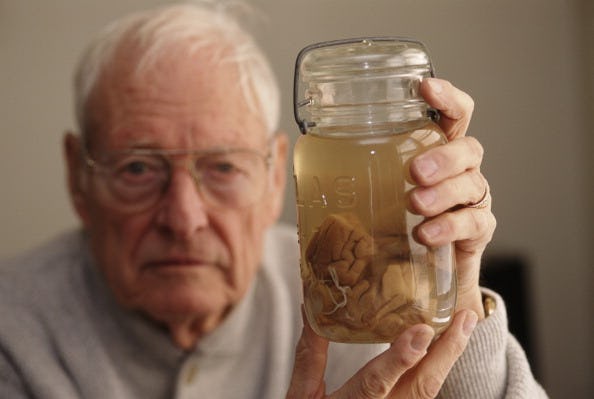
“An exercise in bad science”
Through the years, researchers have investigated both the gross anatomy and microscopic structure of Einstein’s brain. But they haven’t uncovered any solid evidence that either was special.
“One of the things that was shocking to everybody at the time and now seems fairly mundane is that his brain looks just like anybody else’s,” says Timothy Verstynen, an associate professor in the psychology department and Neuroscience Institute at Carnegie Mellon University. “It’s all in how it works that really makes the difference.”
Some researchers reported no meaningful distinctions between Einstein’s brain and those of other people. Others claimed to have identified characteristics that might underlie Einstein’s intellectual abilities, Hines says, but didn’t perform the research in a scientifically rigorous manner. “They’re all kind of just statistical blunders and errors that people have made,” he says.
One striking example is a 1985 study by Harvey and other investigators. They concluded that Einstein’s tissue contained proportionally more neuron-supporting glial cells in Brodmann area 39 (a sort of “Grand Central Station” involved in many cognitive functions, Hines says) than other brains did. But the study had serious problems, he says, including the fact that researchers knew which slices of brain tissue had belonged to Einstein during the examination. They also failed to account for numerous variables, such as the younger average age at death of the comparison brains, that might have explained any differences.
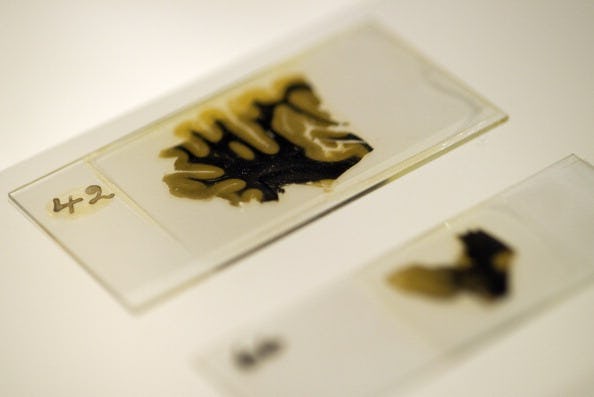
In another analysis, researchers determined that the neurons in one portion of Einstein’s prefrontal cortex (an area involved in higher-level processing such as learning and memory) were packed unusually densely and speculated that this allowed him to process information more rapidly than other people. But similar effects are seen in people with schizophrenia, Hines noted, and the team didn’t report all the similarities they observed between Einstein’s brain and those of other people his was compared to.
Scientists have also compared photos of Einstein’s intact brain with those of “average” brains and described how the patterns of folds and grooves in Einstein’s brain differ from the supposed normal brains. “Of course they found differences,” Hines says. “No two brains are exactly the same; that was an exercise in bad science.”
And that’s one of the major problems with searching for clues to intelligence in Einstein’s brain: There’s only one of it.
Research on the biological underpinnings of intelligence was closely tied with the rise of eugenics in the late 19th Century.
Case studies, in which scientists closely study a particular individual or group, can be valuable starting points for understanding the brain, says Sarah Woolley, a psychology professor at Columbia University's Zuckerman Institute. During the 19th and 20th Centuries, the highly unusual experiences of “Patient Tan” (who could only speak in single syllables), “Patient H.M.” (who was left with permanent amnesia from experimental brain surgery), and Phineas Gage (whose grim brain injury changed his disposition) sparked insights into language, memory, and personality.
“It’s exactly how we go about gathering information that we use to form hypotheses and predictions that we can then go and test in larger samples…to see if there's really a relationship,” Woolley says. “But in terms of Einstein’s brain, I don’t think that any conclusions that have been followed up and supported by real scientific studies came from that.”
On top of all this, Einstein’s brain wasn’t kept in pristine shape. “It does seem that the care of the brain was somewhat haphazard,” Woolley says.
No simple answers
The idea that Einstein’s brain should contain some mark of genius doesn’t exist in a vacuum. Research on the biological underpinnings of intelligence was closely tied with the rise of eugenics in the late 19th Century, Verstynen says. This pseudoscientific movement aimed to identify people practitioners considered “mentally inferior” (read: poor, disabled, incarcerated, LGBTQ, or religious and ethnic minorities) and “literally try to wipe them out of the gene pool,” he says.
During this period, many anatomists believed that individuals with large skulls were literally brainier than other people. That assumption was used as an excuse to exclude women from public life and dehumanize Black people.
“This notion that Einstein was really smart, therefore his brain must be physically somehow different, and therefore better, descends from this long line of racist and sexist views of neuroanatomy,” Hines says.
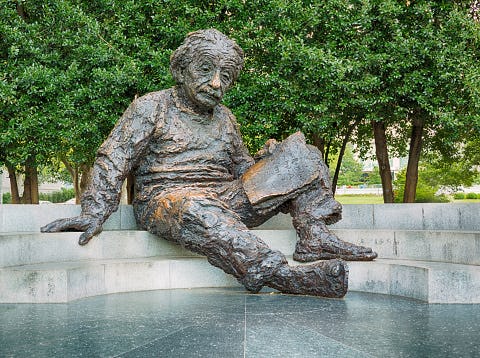
As it happens, when Einstein’s brain was weighed it didn’t turn out to be any bulkier than average. This isn’t surprising, Herculano-Houzel says. Furthermore, it makes sense for Einstein’s brain to have an unremarkable appearance; if you’re examining a brain and spy an overt anomaly, she says, chances are it’s a tumor or some other kind of impairment.
When scientists laid hands on Einstein’s brain, “They hoped to find something blatantly different from all other brains that would be the quick and all-informative explanation of what makes somebody super intelligent,” Herculano-Houzel says. “And of course there’s no such thing; there’s no immediately simple explanation.”
In her own research on rodents, she and her collaborators have learned that larger brains don’t necessarily contain more neurons than smaller ones. Additionally, mice with more neurons in structures known to be involved in functions such as olfaction and navigation don’t outperform their peers on tasks that depend upon these abilities. These studies, she says, are one illustration of how “what you do with the brain that you have is much more important than what brain exactly you were born with.”
There are some developmental conditions that can affect the makeup of the brain, Verstynen acknowledges. However, he says, “As far as I can tell there's no evidence that you can predict a genius brain from a non-genius brain.”
Verstynen and his colleagues have observed that some aspects of brain structure and activity vary in people who are more adept at skills such as spatial reasoning or self-control. But these differences only accounted for a little bit of the variation his team measured, and they may not be innate. Scientists often describe the human brain as being plastic, or ever-changing. Verstynen’s team has found that the structural connections visible in MRI scans of the brain change about 13 percent every 100 days.
In other words, our brain structures are influenced by both nature and nurture. “It’s almost impossible to be able to tell what’s predisposition and what’s experience,” Verstynen says.
The more time we spend mastering a task, the more our brains change. Researchers have reported that certain brain regions are larger in professional pianists and organists than in musicians who practice less intensively and non-musicians. Scientists have also compared the brains of taxi drivers who routinely drive all over London (which is known for its convoluted twists and turns) with those of bus drivers who drive fixed routes, aspiring cabbies who failed their licensing exams, and other people of similar age and education. It turned out that parts of the brain involved in spatial memory are enlarged in successful taxi drivers.
“This experience with having to learn a very, very complicated cognitive map actually made their hippocampi physically larger,” Hines says. However, he adds, these differences are very subtle and only become apparent when you compare large groups of people. “I don’t think it would be possible to distinguish the taxi driver brain from the bus driver brain.”
Stressful experiences can also affect the brain’s development. Growing up in poverty can alter brain regions crucial for memory, planning, and decision-making, although early intervention programs can combat these effects.
Intelligence is complicated
There’s a lot we can learn about how brain structures underlie human cognitive capabilities by investigating how we differ from other animals, Woolley says. But intelligence is a more difficult concept to pin down.
Consider the finches whose brains Woolley studies. “My songbirds are brilliant in vocal learning,” she says, but “they’re not intellectually developed in many other domains.”
Woolley feels that it makes more sense to assess specific skills rather than one all-encompassing notion of intelligence, especially when it comes to humans. “It’s not a meaningful term, and it’s a very loaded term,” she says. “We’re putting labels on very important things that affect people's lives.”
One thing that has become clear is that Albert Einstein wasn’t really unique.
This means that intelligence can be judged based on many criteria. Herculano-Houzel focuses her definition on behavioral flexibility, or the ability to act based on what one expects or wants to happen. Verstynen is investigating a concept called prospective learning, which concerns how humans and other animals draw on past experiences to cope with new situations.
“There’s a really big hope for this idea of looking into things like creativity and imagination and imaginative play,” he says. “That will give us some kind of key insights into the nature of true intelligence and what makes certain people thrive in some situations and not others.”
This approach stands in contrast to older measures like a person’s IQ score, which has its roots in a scholastic aptitude test designed for the French public school system. IQ tests have been used to justify various forms of discrimination, but they’re most reflective of a person’s prior educational opportunities and don’t capture the full range of intellectual abilities.
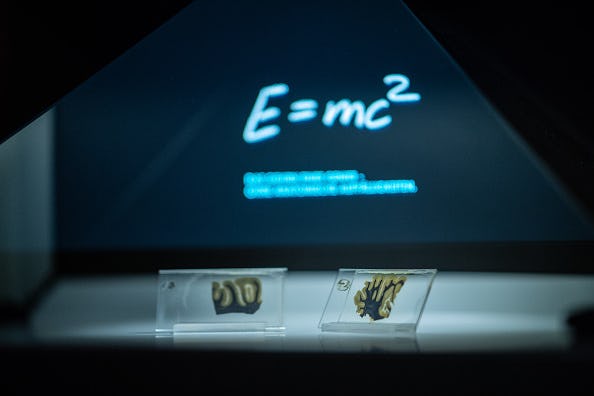
“It collapses a bunch of different abilities together into one score, but we know from studying the brain and studying behavior for the last century and a half that intelligence is multidimensional,” Verstynen says.
For example, a person may display strong verbal intelligence but perform poorly at spatial reasoning tasks. And even these categories break down further into a host of different abilities, some of which are easier to measure than others.
“Certain people are better at certain things than others, but there’s not just one thing that we would call ‘intelligence’ that makes people better or worse at everything,” Verstynen says.
Science has still only reached “the tip of the iceberg” in understanding the multifaceted nature of intelligence, Verstynen says. However, one thing that has become clear is that Albert Einstein wasn’t really unique.
“We don’t gain much by just fixating on this one person,” Herculano-Houzel says.
Scientists have been enamored with Einstein’s brain for more than half a century. But there may be many unrecognized Einsteins whose skills aren’t valued or lack access to training, Verstynen says.
Painting a textbook picture of what a genius is — stuck-out tongue, unruly hair, male, light skin — might be the dumbest thing we’ve ever done. “By treating [intelligence] as a one-dimensional thing and thinking that there’s only one or two geniuses in the world, we’re missing the fact that the world is filled with geniuses in different ways, and we don’t really acknowledge that and we don’t really foster that,” he says.
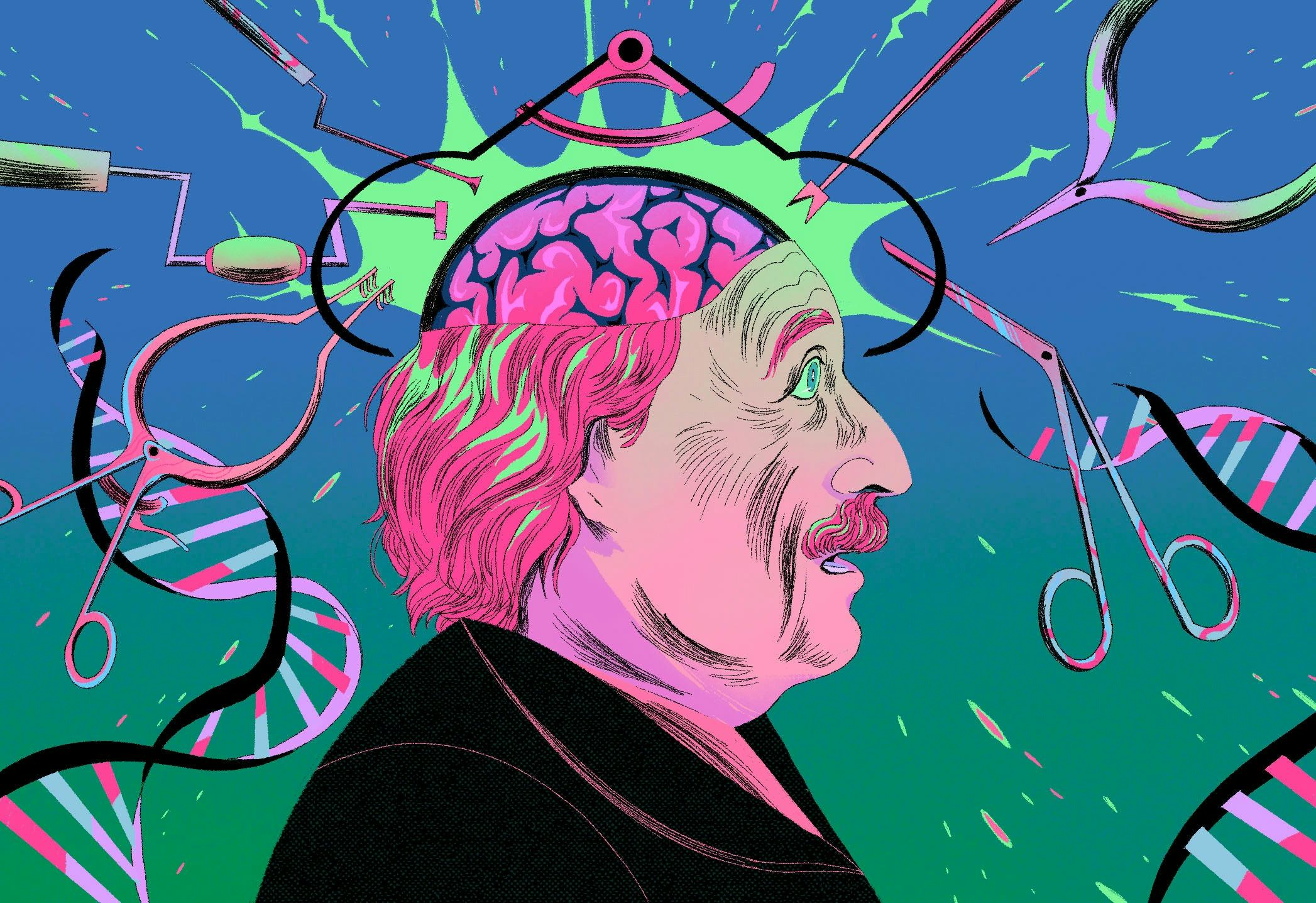
On his 143rd birthday, Inverse celebrates the world’s most iconic physicist — and interrogates the myth of his genius. Welcome to Einstein Week.







